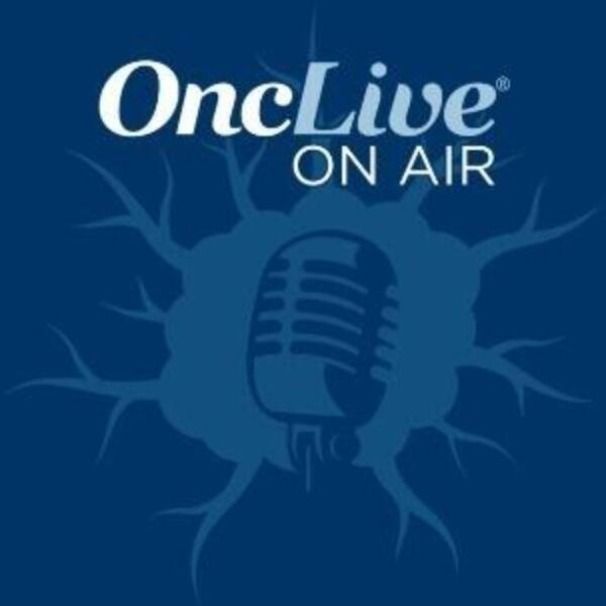Article
GD2-Directed CAR T-Cell Therapy Elicits Durable Benefit in H3K27M-Mutated Diffuse Intrinsic Pontine Gliomas
Author(s):
GD2-directed CAR T-cell therapy demonstrated prolonged periods of radiographic and clinical improvement in pediatric and young adult patients with H3K27M-mutated diffuse intrinsic pontine gliomas and spinal diffuse midline gliomas.
Robbie G. Majzner, MD

GD2-directed CAR T-cell therapy (GD2-CART) demonstrated prolonged periods of radiographic and clinical improvement in pediatric and young adult patients with H3K27M-mutated diffuse intrinsic pontine gliomas (DIPG) and spinal diffuse midline gliomas (DMG), according to findings from a phase 1 trial (NCT04196413) presented during the AACR Annual Meeting 2022.1
“This is a really important series because it is 1 of the first that has shown durable benefit in multiple individuals with solid tumors and clearly in incurable solid tumors,” Robbie G. Majzner, MD, said during the presentation. “We have identified the maximum-tolerated dose of intravenous infused GD2 CAR T cells [as 1e6/kg], and that was around dose-limiting toxicities due to high-grade cytokine release syndrome [CRS].”
DIPG and other H3K27M-mutated DMGs are universally lethal pediatric tumors of the central nervous system. Disialoganglioside GD2 specifically is highly expressed on H3K27M-mutated glioma cells and has demonstrated promising preclinical efficacy of GD2 CAR T cells.
A mice model found that most subjects given GD2 CAR T cells survived compared to those given CD19 CAR T cells.
“GD2 is identical between mouse and human and it is expressed at low levels on neurons," Majzner said. "Despite that, the neurons appear normal, and we saw no evidence that the GD2 CAR T cells were attacking the normal nervous cells that expressed low levels of GD2.”
Additionally, GD2 CAR T cells are associated with fatal hydrocephalus in some models. The toxicity that the mice developed was due to the tumors and because of that, the first-in-human phase 1 trial was created to test whether GD2 CAR T cells can be successfully made from immune cells which are collected from children and young adults with H3K27M-mutant DIPG or spinal H3K27M-mutant DMG.2
Eligibility for enrollment was open to patients aged 2-30 located in the United States. Other requirements included a tissue diagnosis of H3K27M-mutated DIPG with radiographically evident tumor restricted to the brainstem, or tissue diagnosis of H3K27M-mutated DMG of the spinal cord, at least 6 weeks following completion of front-line radiation therapy, at least 3 weeks post chemotherapy or 5 half-lives, and an ECOG performance status of 0 or 1. H3K27M mutant testing will occur as part of standard of care prior to enrollment.
A total of 13 subjects were enrolled and 11 were treated including 4 in dose level 1 and 9 in dose level 2. Two subjects were removed prior to treatment due to rapid progression. The median number of intracerebroventricular (ICV) infusions between patients was 5 and the median month from diagnosis was also 5.
The design of the study was a standard 3+3 dose escalation administered to subjects with DIPG which tested GD2 CAR T cells in subjects with H3K27M-mutant DIPG. Dose level 1 consisted of 1x106 CAR T cells/kg body weight, dose level 2 was 3x106 CAR T cells/kg body weight, and dose level 3 was 10x106 CAR T cells/kg body weight.
Dose level 1 was explored if the first subject treated experienced dose-limiting toxicity (DLT) or if more than 2 of 6 subjects treated experienced DLT. Once the maximum tolerated dose or RP2D was determined in the dose expansion of subjects with DIPG and spinal DMG, up to 20 evaluable subjects with H3K27M-mutant DIPG and 10 evaluable subjects with H3K27M-mutant spinal DMG would be treated at the RP2D. This includes subjects treated during dose escalation.
Primary end points include rate of successful manufacture of GD2 CAR T, maximum tolerated dose, and safety with secondary end points including assessing the clinical benefit of GD2 CAR T at the RP2D in children and young adults with H3K27M gliomas and evaluating the safety and impact on the clinical benefit of repeat ICV administrations of GD2 CAR T.
While no DLTs were observed on dose level 1, 3 subjects experienced DLT on dose level 2 (2 DIPG/1 sDMG). This was due to grade 4 CRS, successfully managed with tocilizumab (Actemra), anakinra, and corticosteroids. CRS occurred earlier on dose level 2 versus 1 (Day 3 vs 7).
On both dose levels, all subjects exhibited transient symptoms related to on-tumor inflammation, termed Tumor Inflammation-Associated Neurotoxicity (TIAN), which was successfully managed with anakinra and, in some cases, CSF drainage and dexamethasone. No DLT due to TIAN has occurred.
Ten patients have reported adequate follow-up to assess benefit with 9 having experienced radiographic and/or clinical benefit after IV infusion. Additionally, they received subsequent ICV GD2 CAR T infusions (median = 4 ICV infusions/pt, range 1-6). While ICV infusions were not associated with high-grade CRS, some subjects developed transient fever, headache, meningismus, nausea, and/or vomiting, and several subjects developed tumor inflammation associated with neurotoxicity.
A total of 4 patients continue to receive ICV infusions on study and have experienced continued clinical and radiographic benefit at 11, 9.5, 8, and 7 months following enrollment. One participant, a 31-year-old with sDMG, has experienced a near-complete (> 95%) reduction in tumor volume and a 17-year-old with DIPG experienced a near-complete (> 98%) reduction in volume of a pontine tumor.
Toxicity was largely related to the location of the tumor and was reversible with intensive supportive care. On-target, off-tumor toxicity was not observed. A total of 3 of the 4 patients exhibited clinical and radiographic improvement. Pro-inflammatory cytokine levels were increased in the plasma and cerebrospinal fluid. Transcriptomic analyses of 65,598 single cells from CAR T cell products and cerebrospinal fluid elucidate heterogeneity in response between participants and administration routes.
“ICV treatment has been tolerated at a flat dose of 30 million CAR T cells without lymphodepletion as a retreatment strategy. We are currently enrolling on an ICV-only arm without lymphodepletion,” added Majzner.
These early results underscore the promise of this therapeutic approach for patients with H3K27M-mutated DIPG or spinal cord DMG.
References
- Majzner RG, Mahdi J, Ramakrishna S, et al. Major tumor regressions in H3K27M-mutated diffuse midline glioma (DMG) following sequential intravenous (IV) and intracerebroventricular (ICV) delivery of GD2-CAR T cells. Presented at: 2022 AACR Annual Meeting; April 8-13, 2022; New Orleans, Louisiana. Accessed April 10, 2022. Abstract CT001.
- GD2 CAR T cells in diffuse intrinsic pontine gliomas (DIPG) & spinal diffuse midline glioma (DMG). Clinicaltrials.gov. Accessed April 10, 2022. https://bit.ly/3LPYjAA








